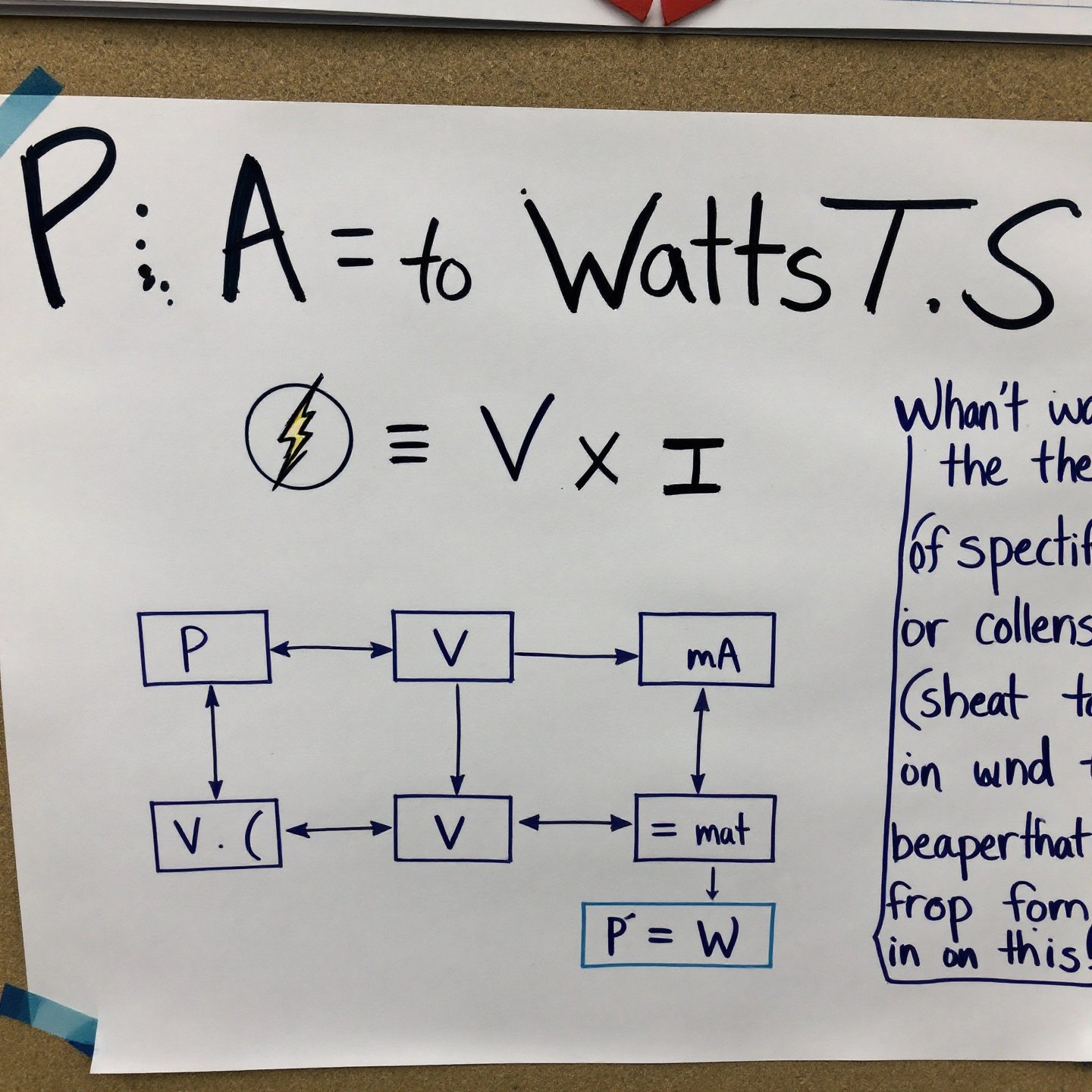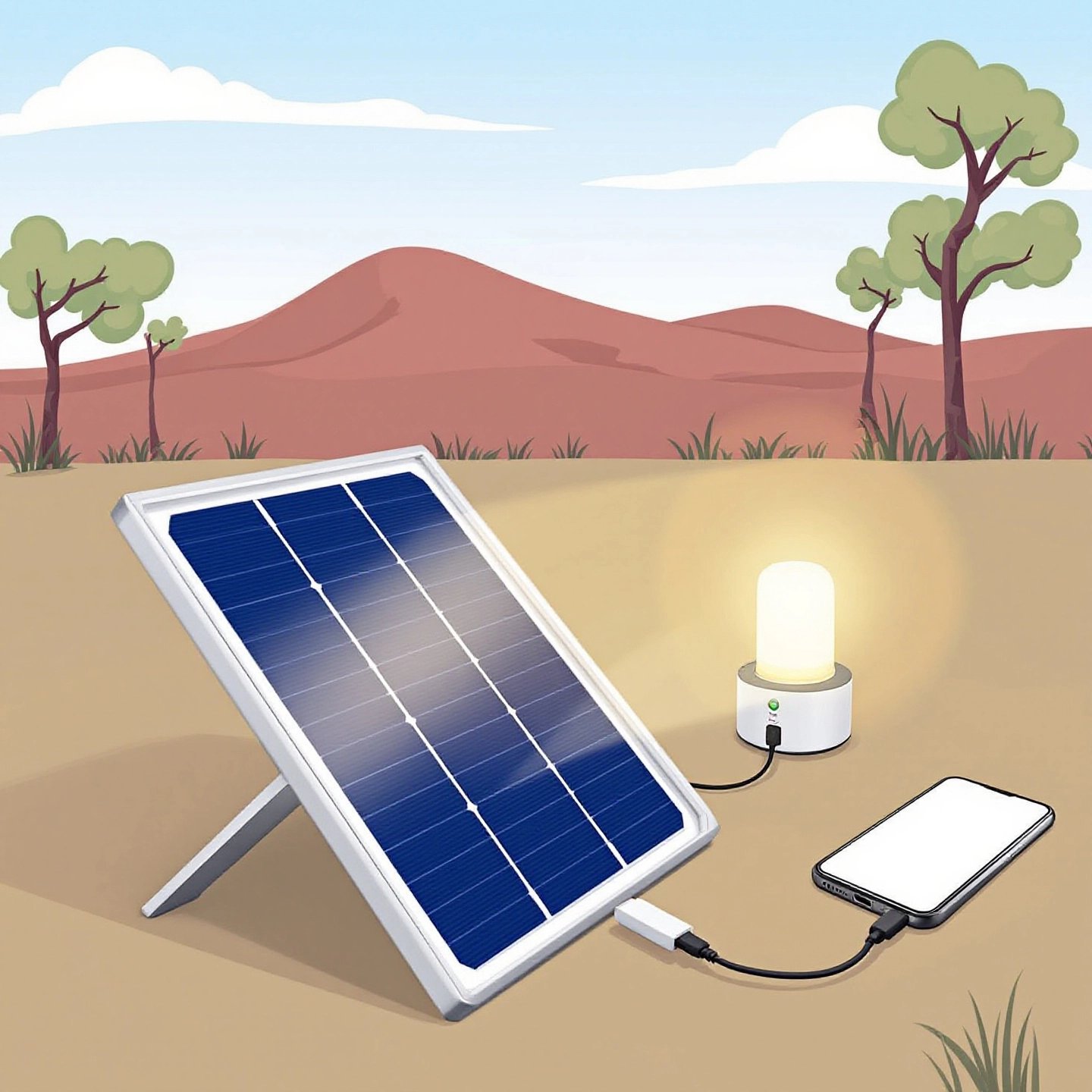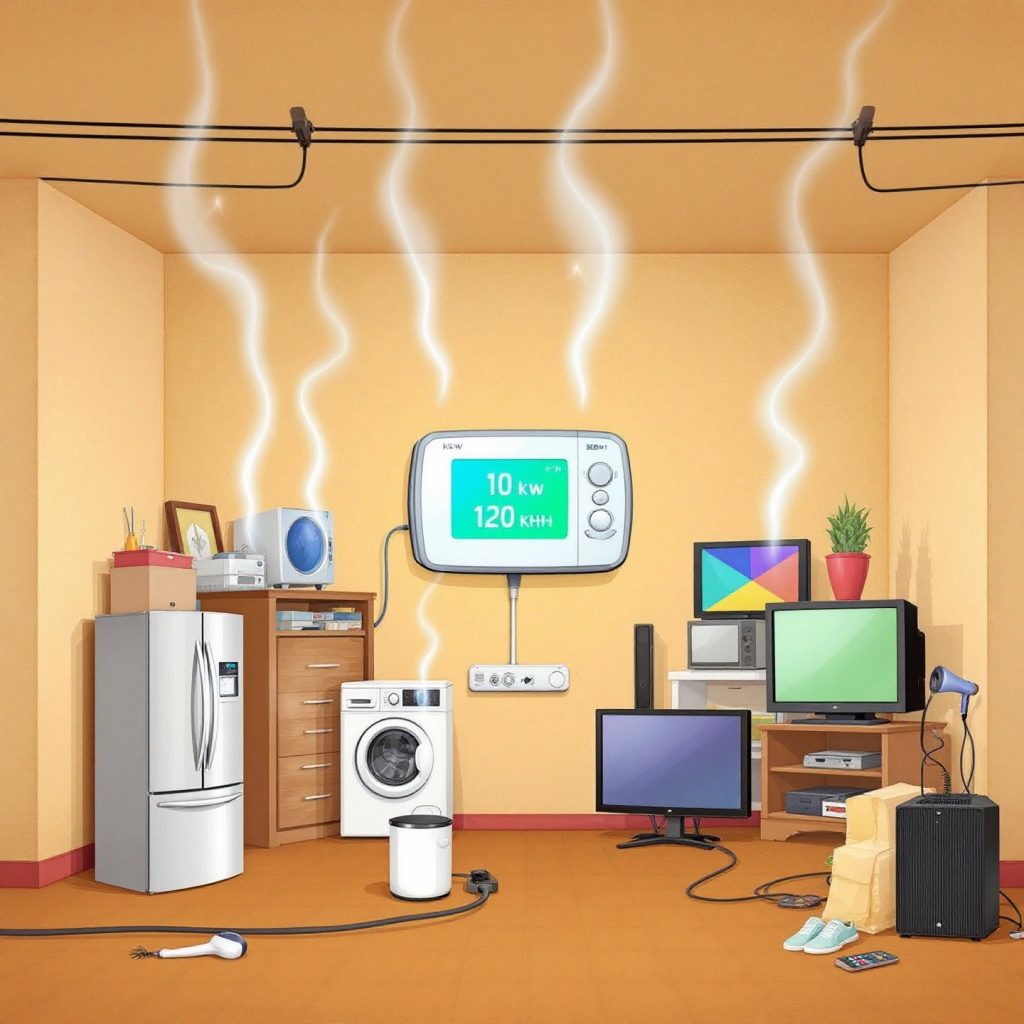Introduction to ma to watts
In the realm of electronics, understanding how to convert milliamps (mA) to watts (W) is a fundamental skill that can significantly enhance your ability to manage device power efficiently. But what do these units really mean, and why are they so crucial in our everyday gadgets?
Let’s start with milliamps. A milliamp, abbreviated as mA, is a unit of electric current. It represents the flow of electrons through a conductor, and one milliamp is equal to one-thousandth of an ampere, the standard unit of current in the International System of Units (SI) (Corrosionpedia). This small unit is vital in measuring the current in smaller electronic devices, where precision is key.
On the other hand, a watt is a unit of power that measures the rate of energy transfer. In simpler terms, it tells you how much energy an electrical device uses per second. This is crucial for understanding how much electricity your device consumes, which directly impacts your energy bills and the overall efficiency of your electronics.
The conversion from mA to watts is not just about numbers; it’s about optimizing the performance and efficiency of your devices. For instance, when you know the power consumption of a device, you can better manage its energy use, potentially extending its lifespan and saving on costs. This is particularly important in today’s world, where energy efficiency is not only a cost-saving measure but also an environmental responsibility.
Imagine you have a smartphone charger that operates at 500 mA. By understanding its power consumption in watts, you can determine whether it’s drawing more power than necessary, which could lead to unnecessary energy waste. This knowledge empowers you to make informed decisions about your electronic devices, from selecting the right power sources to optimizing their usage.
In summary, the conversion from mA to watts is more than a mathematical exercise; it’s a tool for enhancing the efficiency and sustainability of your electronic devices. As we delve deeper into this topic, you’ll discover practical applications and calculations that will help you unlock the full potential of your gadgets.
Understanding the Role of Voltage and Current
Have you ever wondered how the voltage in your devices impacts their power consumption? Understanding the relationship between voltage and current is key to mastering the conversion from milliamps to watts, which ultimately affects how efficiently your devices operate.
Voltage, often described as the electrical pressure that pushes electrons through a conductor, plays a crucial role in determining the current flow within a circuit. According to Ohm’s Law, the current (I) in a circuit is directly proportional to the voltage (V) and inversely proportional to the resistance (R) (All About Circuits). This fundamental principle helps us understand how varying voltage levels can significantly impact the power output of a device.
Power, measured in watts, is the product of voltage and current. Therefore, changes in voltage can have a profound effect on power consumption. For instance, increasing the voltage in a circuit while keeping the current constant will result in a higher wattage. Conversely, reducing the voltage can lower the power output, which might be beneficial for energy savings.
Let’s illustrate this with a simple bullet list to compare how fixed current at different voltages yields varying wattage:
- At 5 volts and 100 mA, the power is 0.5 watts.
- At 10 volts and 100 mA, the power increases to 1 watt.
- At 20 volts and 100 mA, the power further rises to 2 watts.
This relationship highlights why understanding voltage and current is crucial for practical applications. By adjusting voltage levels, you can optimize the power consumption of devices, ensuring they operate efficiently without wasting energy. This is particularly important in designing circuits for low-power devices, where minimizing energy usage is a priority.
In conclusion, mastering the voltage and current relationship not only aids in accurate power calculations but also empowers you to make informed decisions about your electronics’ efficiency. As you continue exploring the conversion from mA to watts, you’ll find that this knowledge is invaluable in optimizing both performance and sustainability.

Basic Formulas for Converting mA to Watts
Converting milliamps (mA) to watts (W) might seem daunting at first, but it’s a straightforward process once you grasp the fundamental formula. This conversion is crucial for determining the power consumption of your devices, allowing you to manage energy use more effectively. So, how exactly do you convert mA to watts?
The basic formula to convert milliamps to watts is:
P (W) = (I (mA) × V (V)) / 1000
Here, P represents power in watts, I is the current in milliamps, and V is the voltage in volts. This formula underscores the importance of accurate voltage input, as the voltage level directly influences the power calculation. Without precise voltage values, your power estimations could be significantly off, impacting your device’s efficiency and safety.
Example Calculations
To make this formula more tangible, let’s explore a few examples using different current values:
- For a device operating at 200 mA and 5 volts:
P = (200 mA × 5 V) / 1000 = 1 watt - For a device operating at 500 mA and 12 volts:
P = (500 mA × 12 V) / 1000 = 6 watts - For a device operating at 1000 mA and 3 volts:
P = (1000 mA × 3 V) / 1000 = 3 watts
These examples illustrate how varying the current and voltage values can lead to different power outputs. Understanding these calculations allows you to assess whether a device is consuming more power than necessary, enabling you to adjust settings or select more efficient power sources.
Imagine you’re evaluating a new gadget and want to ensure it aligns with your energy-saving goals. By applying the mA to watts formula, you can quickly determine its power consumption and make informed decisions about its usage. This not only helps in reducing energy bills but also contributes to a more sustainable environment.
In conclusion, mastering the conversion from milliamps to watts is a valuable skill for anyone interested in optimizing device efficiency. With accurate voltage inputs and a clear understanding of the formula, you can effectively manage your electronics’ power consumption, paving the way for smarter energy use.

Practical Examples for Low to Medium Current Devices
Imagine you’re setting up a cozy reading nook with a small LED lamp. You might wonder how much power this seemingly tiny device consumes. LEDs, known for their energy efficiency, typically operate at currents ranging from 20 mA to 350 mA. This makes them ideal for low current device power applications. But how do these currents translate into watts?
Let’s take an LED operating at 3 volts and 20 mA. Using the formula P (W) = (I (mA) × V (V)) / 1000, we find:
- P = (20 mA × 3 V) / 1000 = 0.06 watts
At such low power consumption, LEDs are perfect for creating ambient lighting without significantly impacting your energy bills.
Now consider a small phone charger, another common device with medium current power requirements. These chargers often operate at 5 volts and 500 mA. Applying the same formula:
- P = (500 mA × 5 V) / 1000 = 2.5 watts
This calculation shows that even when charging your phone, the power usage remains modest, making it easier to manage energy consumption.
Powering Devices with Renewable Energy
For those interested in sustainable energy solutions, integrating low to medium current devices with portable solar panels can be a game-changer. Companies like Renewable Energy Nexus offer flexible solar panels that can power small gadgets, reducing reliance on traditional energy sources. Imagine using a 100-watt portable solar panel to charge your phone or power an LED lamp during a camping trip. This not only provides convenience but also aligns with eco-friendly practices.
For instance, a solar panel delivering 5 volts can efficiently power a 500 mA charger, converting sunlight into usable electricity without any carbon footprint. This synergy between low current devices and solar technology exemplifies how modern innovations can enhance our daily lives while promoting environmental sustainability.
In conclusion, understanding the power requirements of low to medium current devices allows you to optimize their usage and explore renewable energy options. By leveraging technologies like solar panels, you can enjoy the benefits of these devices while contributing to a cleaner, more sustainable future. As you continue to explore the potential of mA to watts conversions, consider how these insights might apply to your own energy consumption habits.
Exploring Higher Current Scenarios and Power Banks
As our reliance on electronic devices grows, so does the need to understand power requirements for devices operating at higher currents, typically above 1000 mA. These currents are common in larger gadgets like laptops, industrial equipment, and even some high-performance audio systems. But what does this mean for your power consumption and battery needs?
When dealing with high current power requirements, it’s crucial to ensure that your power source can handle the demand without compromising efficiency or safety. Devices operating at higher currents require robust power supplies, often necessitating larger battery capacities to sustain prolonged usage. For instance, a laptop running at 2000 mA and 19 volts would consume:
P = (2000 mA × 19 V) / 1000 = 38 watts
This calculation highlights the importance of having a suitable battery capacity, as inadequate power sources can lead to frequent recharging or even device malfunctions.
Importance of Battery Capacity
Battery capacity, typically measured in ampere-hours (Ah) or watt-hours (Wh), indicates how much energy a battery can store and deliver. A high-capacity battery ensures that devices with substantial power needs operate efficiently over extended periods without frequent interruptions. For example, a power bank with a capacity of 60 Wh can provide multiple charges for a smartphone or sustain a laptop for several hours, depending on the device’s power consumption.
To better understand how different currents impact power consumption, consider the following table, which compares various current values at a common voltage of 12 volts:
| Current (mA) | Voltage (V) | Power (W) |
|---|---|---|
| 1000 | 12 | 12 |
| 2000 | 12 | 24 |
| 3000 | 12 | 36 |
| 4000 | 12 | 48 |
This table illustrates how increasing the current significantly raises the power consumption, underscoring the need for adequate power solutions.
Choosing the Right Power Bank
When selecting a power bank, it’s essential to match its watt-hour capacity with your device’s energy needs. High watt-hour power banks are particularly beneficial for users who travel frequently or rely heavily on their devices. For instance, a 94.7 Wh power bank can charge a laptop multiple times, making it an ideal companion for business travelers or students who need reliable power on the go.
Moreover, consider the power bank’s output, measured in amperes (A), as it determines the charging speed. A higher output can charge your device faster, but ensure compatibility to avoid potential damage.
In conclusion, understanding high current power requirements and selecting the right battery capacity are vital for optimizing device performance. Whether you’re powering a laptop or using a power bank, ensuring your energy needs align with your power sources will enhance efficiency and prolong device lifespan. As you explore the potential of mA to watts conversions, consider how these insights apply to your own energy management strategies.
Essential Tips for Accuracy and Safety
When it comes to converting mA to watts, accuracy in power conversion is paramount. Imagine you’re about to power a sensitive electronic device with a specific voltage requirement. Sounds complex? It can be, especially if the voltage isn’t measured correctly. Accurate voltage measurement ensures that the device operates within its safe limits, preventing potential damage.
Voltage measurement accuracy is crucial because even minor deviations can lead to significant power discrepancies. For example, a voltage reading that’s off by just a few volts can result in incorrect power calculations, potentially leading to device malfunctions or failures. Therefore, always verify the voltage specifications provided by the manufacturer and use precise measuring tools to avoid errors.
Potential Hazards of Incorrect Power Assumptions
Incorrect power assumptions can pose serious safety risks. Overestimating the power capacity of a device might lead to overheating, while underestimating it could cause insufficient performance. Both scenarios can shorten the lifespan of your electronics or, worse, cause electrical hazards.
Consider a scenario where you assume a device requires less power than it actually does. The device may draw more current than the circuit can handle, leading to overheating and potentially causing a fire hazard. Conversely, over-provisioning power can lead to inefficient energy use and increased costs.
Key Safety Tips
- Double-check voltage ratings: Always refer to the device’s manual or specification sheet for the correct voltage and current ratings.
- Use reliable measuring tools: Invest in quality multimeters or voltage testers to ensure precise readings.
- Avoid overloading circuits: Ensure that the total power demand does not exceed the circuit’s capacity, as outlined in the electrical load capacity guidelines.
- Regularly inspect devices: Check for signs of wear or damage, which could affect power consumption and safety.
- Consult professionals when in doubt: If you’re unsure about the power requirements or safety of your devices, seek advice from a qualified electrician.
By adhering to these safety tips, you’ll notice a significant improvement in both the performance and longevity of your devices. Accuracy in power conversion is not just about optimizing efficiency; it’s about ensuring safety and reliability in your everyday electronics. As you continue to explore the intricacies of mA to watts conversions, remember that precise measurements and cautious calculations are your best allies in maintaining safe and efficient power usage.
Comparing Manual Calculations and Online Tools
When it comes to converting mA to watts, you have two primary options: manual calculations and online conversion tools. Each method has its own set of advantages and drawbacks, and understanding these can help you decide which approach best suits your needs.
Pros and Cons of Manual Calculations
Manual calculations offer a hands-on approach that can enhance your understanding of the underlying principles of power conversion. By using the formula P (W) = (I (mA) × V (V)) / 1000, you gain a deeper insight into how current and voltage interact to produce power. This method encourages precision and attention to detail, which can be beneficial in educational settings or when verifying the accuracy of automated tools.
- Pros:
- Deepens understanding of electrical principles.
- Encourages accuracy and precision.
- Does not rely on internet connectivity or external tools.
- Cons:
- Time-consuming, especially for complex calculations.
- Prone to human error if not double-checked.
- Requires a good grasp of mathematical formulas.
Advantages of Online Conversion Tools
Online conversion tools, such as the Binary Translator Power Converter, offer a quick and convenient way to convert mA to watts. These tools are user-friendly and can handle complex calculations within seconds, making them ideal for those who need fast results without diving into the math.
- Benefits:
- Time-efficient and easy to use.
- Reduces the risk of calculation errors.
- Accessible from any device with internet access.
- Drawbacks:
- Reliance on internet connectivity.
- Potential inaccuracies if the input data is incorrect.
- Lack of understanding of the calculation process.
Real-Time Adjustments and Verification
One of the key advantages of using online tools is their ability to accommodate real-time adjustments. If you need to tweak voltage or current values, these tools can instantly recalculate power outputs, providing flexibility for dynamic situations. However, it’s crucial not to rely solely on these tools without verifying specifications. Always cross-check the voltage and current ratings of your devices to ensure safety and accuracy.
In conclusion, whether you choose manual calculations or online tools depends on your specific needs and circumstances. While online tools offer convenience and speed, manual calculations provide a deeper understanding and accuracy. By balancing both methods, you can ensure precise and reliable power conversions, enhancing your ability to manage energy efficiently.
Common Mistakes and How to Avoid Them
When converting milliamps (mA) to watts (W), even minor conversion errors can lead to significant issues. Sounds complex? It can be, especially if you’re not double-checking your calculations. Let’s explore some common mistakes and how you can avoid them to ensure accurate power conversions.
Typical Conversion Errors
One frequent error is miscalculating due to incorrect voltage input. Imagine you’re working with a device that requires precise voltage levels. If you mistakenly input the wrong voltage, your power calculation will be off, potentially leading to device malfunction. Always verify the voltage ratings using the manufacturer’s specifications before performing conversions.
Another common mistake is overlooking the unit conversion from milliamps to amps. Remember, 1 ampere equals 1000 milliamps. Failing to convert these units correctly can lead to substantial errors in your wattage calculations.
Double-Checking Measurements
Accurate current measurements are crucial for reliable power calculations. Use quality multimeters to ensure your readings are precise. When measuring current, ensure that the multimeter is set to the correct range to prevent misinterpretations.
Moreover, always cross-reference your calculations with reliable resources or official documentation. This step is essential to avoid conversion errors and ensure that your devices operate safely and efficiently. For instance, consulting resources like the Texas Instruments guide on common DC/DC converter mistakes can provide valuable insights into accurate power management practices.
Key Strategies to Avoid Mistakes
- Understand the formula: Familiarize yourself with the conversion formula P (W) = (I (mA) × V (V)) / 1000 to ensure accurate calculations.
- Verify voltage and current ratings: Always check the device’s manual for correct specifications.
- Use reliable tools: Invest in high-quality measuring instruments for precise readings.
- Cross-check calculations: Reference official documentation or use trusted online tools to verify your results.
By implementing these strategies, you’ll minimize the risk of conversion errors and enhance the reliability of your power calculations. Accurate conversions not only optimize device performance but also ensure safety, preventing potential hazards associated with incorrect power assumptions.
As you continue to explore the intricacies of mA to watts conversions, remember that careful attention to detail and thorough verification are your best allies in achieving accurate and safe power management.

Maximizing Efficiency Through Correct Power Conversions
Imagine you’re managing a fleet of electronic devices, each with varying power needs. Sounds complex? It can be, but mastering the conversion from milliamps (mA) to watts (W) is your key to unlocking efficient power usage and significant cost savings.
Accurate conversion is not just about getting the numbers right; it’s about optimizing energy usage. When you understand how to convert mA to watts correctly, you can ensure that each device operates at its optimal power level, reducing unnecessary energy consumption and extending the lifespan of your electronics. This is particularly crucial in today’s energy-conscious world, where efficient power conversion directly translates to lower utility bills and a reduced carbon footprint.
Benefits of Accurate Power Conversions
Accurate power conversions offer numerous benefits, from cost savings to improved battery health. Efficient power conversion means less energy wastage, which not only lowers your electricity bills but also reduces the environmental impact of your energy use. By ensuring that devices are neither overpowered nor underpowered, you maintain their health and longevity, avoiding premature battery degradation and potential device failures.
Consider a scenario where you’re using renewable energy sources, like solar panels, to power your devices. Accurate conversion ensures that the energy captured is utilized efficiently, maximizing the return on your investment in green technology. This is where Renewable Energy Nexus solar panels come into play. These panels are designed to provide reliable, eco-friendly power solutions that align with your energy optimization goals.
Integrating Renewable Energy Solutions
Integrating solar panels from Renewable Energy Nexus into your energy strategy can significantly enhance your efficiency efforts. These panels offer a sustainable way to power your devices, reducing reliance on fossil fuels and contributing to a cleaner environment. Imagine using a 200-watt solar panel to power your home office setup. By converting the energy from sunlight into electricity, you not only save on energy costs but also support a greener future.
Moreover, using solar panels can stabilize energy costs, shielding you from fluctuations in energy prices. With options like flexible portable panels for on-the-go use, you can power everything from small devices to entire home systems, making them a versatile addition to your energy management toolkit.
Practical Steps for Energy Optimization
- Assess your energy needs: Determine the power requirements of your devices to select the appropriate solar panel size.
- Implement energy-efficient practices: Use devices with lower power consumption and ensure they are powered off when not in use.
- Regular maintenance: Keep solar panels clean and free of debris to ensure maximum efficiency.
- Monitor energy usage: Use smart meters to track energy consumption and adjust usage patterns accordingly.
By following these steps, you can significantly enhance your energy efficiency and optimize your power conversions. The combination of accurate conversions and renewable energy solutions provides a robust framework for achieving sustainable energy management.
In conclusion, mastering the conversion from mA to watts is a powerful tool in your energy optimization arsenal. By integrating Renewable Energy Nexus solar panels and adopting efficient power practices, you can achieve significant cost savings and contribute to a sustainable future. As you continue to explore the potential of energy optimization, consider how these strategies can be applied to your own energy management practices, leading to a more efficient and eco-friendly lifestyle.
Conclusion
As we wrap up our exploration of converting milliamps (mA) to watts (W), it becomes evident that mastering this conversion is more than just a technical exercise—it’s an essential skill for ensuring both the safety and efficiency of our electronic devices. Imagine the impact of consistently optimizing power usage across all your devices. Sounds promising? It is, especially in an era where energy efficiency is paramount.
Understanding the importance of power conversion allows you to make informed decisions about your energy consumption, helping to reduce waste and lower utility bills. By accurately converting mA to watts, you ensure that devices operate within their optimal power range, preventing overconsumption and extending their lifespan. This not only benefits your wallet but also contributes to a sustainable environment by reducing the overall carbon footprint.
Looking ahead, the future of energy efficiency hinges on accurate power conversions. As renewable energy sources become more integrated into our daily lives, the ability to efficiently convert and utilize this energy will be crucial. The transition to a renewable energy era presents both challenges and opportunities, and those who master power conversion are well-positioned to take full advantage of the benefits it offers.
Renewable Energy Nexus solar panels exemplify this shift, offering eco-friendly solutions that align with energy optimization goals. By incorporating these panels into your energy strategy, you can harness the power of the sun to fuel your devices, reducing reliance on traditional energy sources and promoting a cleaner, greener future.
In conclusion, the importance of power conversion cannot be overstated. As you apply these guidelines, consider how each conversion contributes to a broader vision of energy efficiency and sustainability. Embrace the future of energy efficiency by mastering mA to watts conversions and integrating renewable energy solutions into your lifestyle. Together, we can unlock a brighter, more sustainable future.
FAQs on Converting mA to Watts
1. How do you convert watts to mA?
To convert watts to mA, use the formula: mA = (Watts × 1000) / Voltage. Accurate voltage input is essential to ensure precise conversion.
2. What is mA in watts?
mA represents milliamps, a unit of current. To convert to watts, use the formula: P (W) = (I (mA) × V (V)) / 1000, where V is voltage.
3. Is 1000 mA an amp?
Yes, 1000 mA is equal to 1 amp. This conversion is crucial for understanding current flow in larger electronic devices.
4. Why is accurate power conversion important?
Accurate power conversion prevents device damage and optimizes energy use, leading to cost savings and extended device lifespan.
5. How can solar panels help in power conversion?
Solar panels convert sunlight into electricity, providing a sustainable power source. They can efficiently power devices, reducing reliance on traditional energy.



